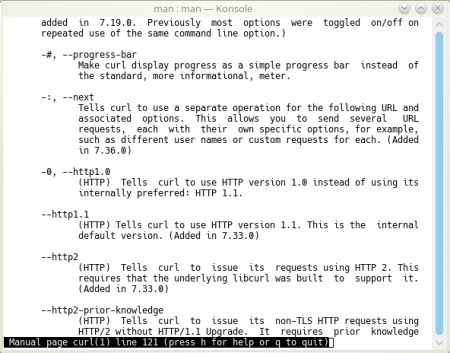The first curl release ever saw the light of day on March 20, 1998 and already then, curl could transfer any amount of URLs given on the command line. It would iterate over the entire list and transfer them one by one.
Not even 22 years later, we introduce the ability for the curl command line tool to do parallel transfers! Instead of doing all the provided URLs one by one and only start the next one once the previous has been completed, curl can now be told to do all of them, or at least many of them, at the same time!
This has the potential to drastically decrease the amount of time it takes to complete an operation that involves multiple URLs.
–parallel / -Z
Doing transfers concurrently instead of serially of course changes behavior and thus this is not something that will be done by default. You as the user need to explicitly ask for this to be done, and you do this with the new –parallel option, which also as a short-hand in a single-letter version: -Z (that’s the upper case letter Z).
Limited parallelism
To avoid totally overloading the servers when many URLs are provided or just that curl runs out of sockets it can keep open at the same time, it limits the parallelism. By default curl will only try up to 50 transfers concurrently, so if there are more transfers given to curl those will wait to get started once one of the first transfers are completed. The new –parallel-max command line option can be used to change the concurrency limit.
Progress meter
Is different in this mode. The new progress meter that will show up for parallel transfers is one output for all transfers.
Transfer results
When doing many simultaneous transfers, how do you figure out how they all did individually, like from your script? That’s still to be figured out and implemented.
No same file splitting
This functionality makes curl do URLs in parallel. It will still not download the same URL using multiple parallel transfers the way some other tools do. That might be something to implement and offer in a future fine tuning of this feature.
libcurl already do this fine
This is a new command line feature that uses the fact that libcurl can already do this just fine. Thanks to libcurl being a powerful transfer library that curl uses, enabling this feature was “only” a matter of making sure libcurl was used in a different way than before. This parallel change is entirely in the command line tool code.
Ship
This change has landed in curl’s git repository already (since b8894085000) and is scheduled to ship in curl 7.66.0 on September 11, 2019.
I hope and expect us to keep improving parallel transfers further and we welcome all the help we can get!










 This is not my area of expertise. I had to consult
This is not my area of expertise. I had to consult 
